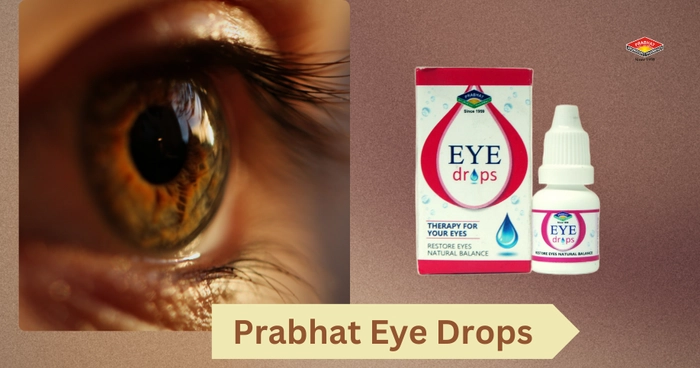What is Eye Flu?
"Eye flu" is a colloquial term often used to describe conjunctivitis, an inflammation of the conjunctiva, the thin, transparent layer of tissue that covers the white part of the eye and the inside of the eyelids. Conjunctivitis can be caused by various factors, including viral or bacterial infections, allergies, or exposure to irritants.
SYNOPSIS
In Ayurveda, conjunctivitis, commonly referred to as "eye flu," is known as "Netra Abhishyanda" or "Netra Shotha" and is primarily associated with an imbalance in the Pitta dosha. The holistic approach to treating this condition includes using herbal remedies such as Triphala, rose water, and neem, alongside dietary adjustments and lifestyle changes to balance the body's doshas. Preventive measures, proper eye hygiene, and specific Ayurvedic treatments like Netra Tarpana and Nasya are also recommended to alleviate symptoms and promote eye health.
Types of Conjunctivitis (Eye Flu)
1. Viral Conjunctivitis:
- Cause: Typically caused by adenoviruses.
- Symptoms: Watery discharge, redness, itching, and sensitivity to light. Often accompanies upper respiratory infections like colds.
- Contagiousness: Highly contagious.
2. Bacterial Conjunctivitis:
- Cause: Caused by bacteria such as Staphylococcus aureus, Streptococcus pneumoniae, or Haemophilus influenzae.
- Symptoms: Thick, yellow or greenish discharge, redness, swelling of the conjunctiva, and sometimes the eyelids sticking together, especially after sleep.
- Contagiousness: Contagious, often spreads through direct contact with infected individuals or contaminated objects.
3. Allergic Conjunctivitis:
- Cause: Triggered by allergens like pollen, dust mites, pet dander, or cosmetics.
- Symptoms: Itchy eyes, redness, tearing, and swelling. Often accompanied by other allergy symptoms like a runny nose and sneezing.
- Contagiousness: Not contagious.
4. Irritant Conjunctivitis:
- Cause: Caused by irritants such as chlorine in swimming pools, smoke, or exposure to chemicals.
- Symptoms: Redness, irritation, and watery eyes.
- Contagiousness: Not contagious.
Treatment
- Viral Conjunctivitis: Usually self-limiting; symptoms typically resolve within a week or two without specific treatment. Cool compresses and artificial tears can help alleviate discomfort. Hygiene measures, like frequent handwashing and avoiding touching the eyes, are crucial to prevent spreading the infection.
- Bacterial Conjunctivitis: Often treated with antibiotic eye drops or ointments. Symptoms generally improve within a few days of starting treatment.
- Allergic Conjunctivitis: Managed by avoiding allergens and using antihistamine or anti-inflammatory eye drops. Cold compresses can also provide relief.
- Irritant Conjunctivitis: Removing the source of irritation and rinsing the eyes with saline or water can help. Symptoms typically resolve once the irritant is removed.
Prevention
- Maintain good hygiene: Wash hands frequently, avoid touching the face and eyes, and use clean towels and bedding.
- Avoid sharing personal items: Do not share eye makeup, contact lenses, or eyeglasses.
- Protect your eyes: Use protective eyewear in environments with potential irritants or allergens.
- Manage allergies: If you have known allergies, take preventive measures during peak allergy seasons.
If symptoms persist or worsen, it is important to seek medical attention to rule out more serious conditions and receive appropriate treatment.
What are the Symptoms of Eye Flu?
The symptoms of eye flu (conjunctivitis) can vary depending on the underlying cause, but common symptoms include:
General Symptoms of Conjunctivitis
- Redness: The white part of the eye (sclera) becomes red or pink.
- Itching: A persistent urge to scratch or rub the eyes.
- Tearing: Increased production of tears.
- Discharge: The eye may produce a watery or thick discharge that can be clear, white, yellow, or green.
- Swelling: Swelling of the conjunctiva and sometimes the eyelids.
- Pain: Mild discomfort or pain, although this is less common.
- Sensitivity to Light: Increased sensitivity to bright light (photophobia).
- Gritty Feeling: A sensation of having sand or grit in the eye.
- Crusting: Eyelids may stick together, especially after sleep, due to dried discharge.
Symptoms by Type of Conjunctivitis
1. Viral Conjunctivitis:
- Watery, clear discharge.
- Redness and irritation.
- Often associated with respiratory infections like a cold or flu.
- Swelling of the lymph nodes near the ear (in some cases).
2. Bacterial Conjunctivitis:
- Thick, yellow or greenish discharge.
- Redness and irritation.
- Swelling of the conjunctiva and eyelids.
- Eyelids may stick together, especially in the morning.
3. Allergic Conjunctivitis:
- Intense itching.
- Redness.
- Watery discharge.
- Swollen eyelids.
- Often accompanied by other allergic symptoms like sneezing and a runny nose.
4. Irritant Conjunctivitis:
- Redness and irritation.
- Watery discharge.
- Pain or discomfort after exposure to the irritant.
- Symptoms usually resolve once the irritant is removed.
When to Seek Medical Attention
- Symptoms persist for more than a week without improvement.
- Severe pain in the eye.
- Vision changes or significant sensitivity to light.
- Intense redness in one or both eyes.
- Large amounts of discharge, especially if it is yellow or green.
- Symptoms are accompanied by a high fever or other severe systemic symptoms.
Prompt medical evaluation is important to determine the cause of conjunctivitis and to receive appropriate treatment, especially if symptoms are severe or do not improve with standard home care measures.
What Does Ayurveda Say about Eye Flu?
Ayurveda, the traditional system of medicine from India, provides a holistic approach to health and wellness, including the treatment of eye conditions like conjunctivitis (eye flu). According to Ayurvedic principles, conjunctivitis is often referred to as "Netra Abhishyanda" or "Netra Shotha" and is believed to be caused by an imbalance of the doshas (Vata, Pitta, and Kapha) in the body.
Ayurvedic Perspective on Conjunctivitis
- Pitta Dominance: Conjunctivitis is usually associated with an imbalance in the Pitta dosha, which governs heat and inflammation in the body. An excess of Pitta can lead to inflammation and infection in the eyes.
Ayurvedic Treatment for Eye Flu
1. Herbal Remedies:
- Triphala: A blend of three fruits (Amla, Haritaki, and Bibhitaki), Triphala is often used as an eye wash to reduce inflammation and infection.
- Rose Water: Pure rose water can be used as an eye drop to soothe irritated eyes.
- Neem: Neem leaves have antimicrobial properties and can be used to prepare a decoction for washing the eyes.
- Aloe Vera: Aloe vera gel can be diluted and used to soothe the eyes.
2. Diet and Lifestyle:
- Cooling Foods: Consuming foods that have a cooling effect on the body, such as cucumbers, melons, and leafy greens, can help balance Pitta.
- Hydration: Drinking plenty of water and staying hydrated is important.
- Avoiding Irritants: Reducing exposure to smoke, dust, and other irritants can prevent exacerbation of symptoms.
3. Eye Care Practices:
- Eye Washes: Regular washing of the eyes with cool, clean water or herbal decoctions.
- Rest: Giving the eyes adequate rest and avoiding strain from screens and bright lights.
4. Ayurvedic Medicines:
- Chandrodaya Varti: An Ayurvedic eye ointment used to treat various eye disorders.
- Saptamrita Lauha: An Ayurvedic formulation that supports eye health and can be used in the treatment of eye infections.
- Prabhat Eye Drops: An Ayurvedic formulation that has a base of pure stram distilled Rose Water and has potent ayurvedic herbs that kills the bacteria and gives you relief from conjunctivits.
5. Panchakarma Therapies:
- Netra Tarpana: A specialized Ayurvedic treatment where medicated ghee is poured over the eyes to nourish and heal.
- Nasya: The administration of herbal oils through the nasal passage, which can help balance doshas and relieve eye conditions.
Preventive Measures
- Hygiene: Maintaining good eye hygiene by washing hands frequently and avoiding touching the eyes with dirty hands.
- Protective Eyewear: Using protective eyewear in environments with high levels of dust or pollution.
Consultation with an Ayurvedic Practitioner
It's important to consult with a qualified Ayurvedic practitioner before starting any treatment to ensure the remedies and practices are appropriate for your specific constitution and health condition.
Ayurveda emphasizes a balanced lifestyle, natural remedies, and preventive care to maintain eye health and treat conditions like conjunctivitis.

